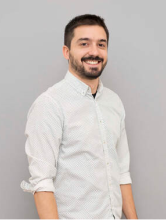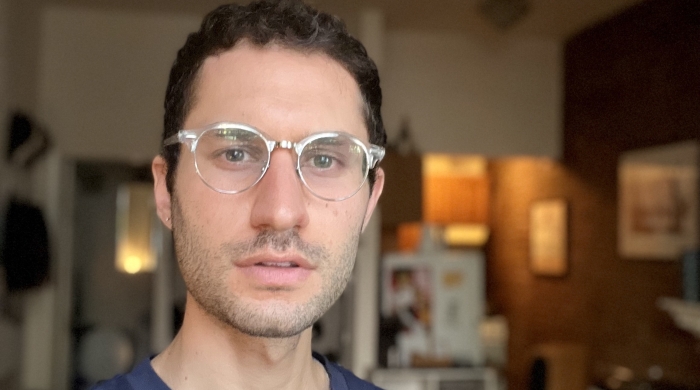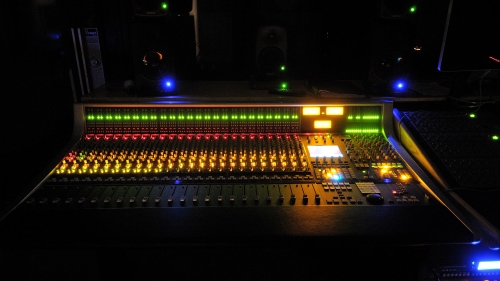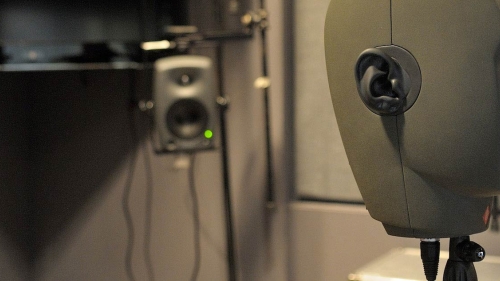Two faculty members from NYU Steinhardt's Music and Audio Research Laboratory will study the feasibility of an intentional music listening intervention for stroke patients’ mental health recovery.

Pablo Ripollés, assistant professor of music technology and psychology, and Magdalena Fuentes, assistant professor of music technology and integrated design and media, have been awarded a two-year, $706,367 R34 grant from the National Institutes of Health (NIH).
In "Feasibility of a music listening intervention for mental health recovery in chronic stroke," Ripollés and Fuentes—both from NYU Steinhardt’s Music and Auditory Research Laboratory (MARL)—seek to determine if intentionally listening to music is an achievable intervention for improving mental health outcomes in older stroke patients in New York.
The grant is part of a special call for funding through the NIH’s National Center for Complementary and Integrative Health (NCCIH), which focuses on music and wellness and requires the participation of interdisciplinary teams. In addition to Ripollés and Fuentes, who also have appointments with NYU Arts & Science and NYU Tandon School of Engineering, respectively, NYU Langone's Heidi Schambra, MD, is also a co-Principal Investigator on the grant; she specializes in neurology and works closely with a population of stroke patients.
Intentional music listening (IML) is the active practice of listening to music without engaging in other activities. Preliminary studies show that IML has the potential to reduce depression and anxiety at the acute stage of stroke, but previous work has lacked large enough sample sizes and objective measures of treatment dose.
“One of the most innovative parts of this study is that when you do music therapy for motor recovery, you ask the patient to play music with the affected limb, making it relatively easy to measure the ‘dose’ through sensors and other methodology,” says Ripollés, who is also associate director of MARL. “Listening is more difficult to calculate, so we are managing that aspect by 1) giving patients a phone with a free Spotify account and tracker to see which songs they listened to and how often, and 2) using music information retrieval and machine listening to calculate the acoustic characteristics of the music listened to.”
With this listening data in hand, Fuentes will leverage her expertise in music information retrieval, using artificial intelligence and a series of computational tools to understand the characteristics of the music that the patients are listening to, such as chords, rhythm, genre, instruments, and temporal dynamics such as tempo changes, harmony, melody, and mood.
“We use the computational tools so that human beings don’t have to record these characteristics manually, which saves a lot of time and allows us to scale this study to more patients,” says Fuentes. “Throughout the study, I’ll work with Pablo and the patients to modify these tools in the context of this intervention so we have in-depth conclusions about not only how much they’re listening to music, but also what kind, as well as what correlations there might be between the content and attributes of participants’ musical choices and their mental health recovery.”
“We’re looking for improvements in our patients’ mental health and cognition and for brain plasticity changes before and after the trial,” says Ripollés. “This new funding mechanism by the NIH wants to know first whether the therapy can happen in the way we’re proposing it. If it can, then we can apply for a second grant to gather even more data to create robust, standardized music-based interventions to induce more mental health benefits.”
Related Articles
NYU Researchers Lead Team That Developed Bird Migration Tracking Technology
A research team based in part at NYU Steinhardt has achieved a breakthrough in ornithology and artificial intelligence by developing an end-to-end system to detect and identify the subtle nocturnal calls of migrating birds.
Accessible Music and Creative Code
For Music Technology alum Willie Payne (PhD ’23), music and code go hand in hand. While at NYU Steinhardt, Payne partnered with The Filomen M. D’Agostino Greenberg Music School to help people pursue their study of music while addressing the challenges posed by vision loss.
NYU Funds Interdisciplinary Research on AI Tools for Speech Therapy
The funding will support creating AI-driven tools that offer targeted feedback for clinicians to better support speech therapy for children.
Related Programs
Related Department
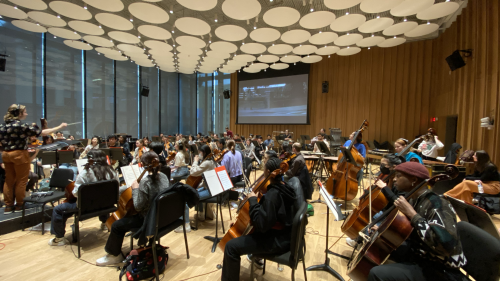
Music and Performing Arts Professions
35 W. 4th Street, 2nd Floor
New York, NY 10012
212-998-5424
mpap@nyu.edu


